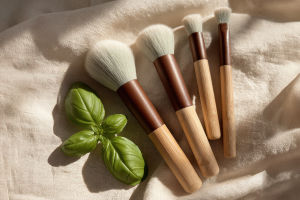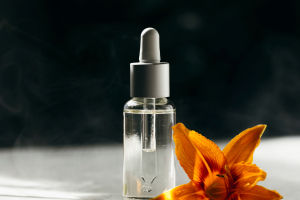Choosing the right foundation can feel like an overwhelming task—there are endless shades, undertones, and formulas available. But with a little knowledge and the right strategy, you can find your perfect match.
Let's explore the practical steps and expert-backed advice to ensure your foundation looks flawless, natural, and enhances your beauty from the first swipe.
Understand Your Skin's Undertone
Before you even look at foundation shades, you need to understand your undertone. Undertones are the subtle hues beneath the surface of your skin and typically fall into three categories: cool, warm, and neutral.
• Cool undertones usually show hints of pink, red, or blue.
• Warm undertones include yellow, golden, or peachy tones.
• Neutral undertones are a balance between warm and cool.
To find your undertone, try these simple tricks:
• Check the veins on your wrist. If they look blue or purple, you're likely cool-toned; greenish veins suggest warm undertones.
• Hold up silver and gold jewelry. If silver looks better on you, you may be cool-toned; if gold flatters you more, you might be warm-toned.
• Think about how your skin reacts to the sun. If you tan easily, you might be warm or neutral. If you burn quickly, you could be cool-toned.
Identify Your Skin Type
Foundation is more than just color—it's also about formula. Your skin type plays a major role in how a foundation performs throughout the day.
• Oily skin: Look for oil-free or matte formulas that control shine.
• Dry skin: Hydrating or dewy foundations will keep your skin looking fresh.
• Combination skin: A balanced foundation or buildable formula works best.
• Sensitive skin: Choose hypoallergenic products with minimal fragrance.
Knowing your skin type ensures the foundation sits well and enhances rather than masks your natural skin texture.
Test Foundation in Natural Light
Lighting is everything when it comes to testing foundation. Artificial lighting—especially store lighting—can distort color perception. Always test your foundation on your jawline or the side of your cheek and step outside to see how it looks in natural daylight.
A good match will blend seamlessly with your skin, leaving no obvious line of difference between your jaw and neck.
Don't Rely Solely on Bottle Appearance
The color in the bottle often appears darker or lighter than it actually looks on your skin. That's why it's important to test, not guess. Additionally, different formulas may oxidize—meaning they can darken slightly once they react with air and skin oils.
To ensure accuracy, apply the product and wait about 10–15 minutes before deciding. This gives the foundation time to settle and show its true finish and color.
Consider Seasonal Shade Changes
Your skin tone can change with the seasons—darker in summer, lighter in winter. It's wise to keep two foundation shades on hand or use a mix-and-match technique to blend your ideal tone year-round.
Some brands offer color-adjusting drops or mixers to help adapt your foundation shade without purchasing entirely new bottles.
Choose the Right Coverage Level
Foundation comes in different coverage levels: sheer, medium, and full.
• Sheer coverage: Great for everyday use, offering a natural and breathable look.
• Medium coverage: Ideal for evening out skin tone while still looking like skin.
• Full coverage: Perfect for events or if you want a flawless finish.
Don't be afraid to layer or use concealer for areas that need more attention rather than relying on heavy foundation.
Use Tools for Precision
Application tools matter. Whether you use a brush, sponge, or clean fingers, the method affects how your foundation looks.
• Brushes provide a smooth, polished finish and are great for buildable coverage.
• Sponges, especially damp beauty blenders, give a natural, airbrushed effect.
• Fingertips warm up the product and are excellent for blending cream or liquid formulas into dry skin.
The key is to blend thoroughly and not use too much product at once.
Set for Long-Lasting Wear
To extend your foundation's longevity, consider a primer before application and a setting powder or spray afterward. Primers help to smooth skin texture and reduce shine or dryness, while setting products lock your look in place.
Choose formulas suited to your skin needs—hydrating sprays for dry skin, mattifying powders for oily types.
Consult Experts or Beauty Counters
If you're unsure, visit a professional makeup artist or consult a beauty counter at a trusted store. Many brands offer shade-matching technology or personalized consultations, which can significantly reduce trial-and-error stress.
Expert advice is especially helpful if you're looking for foundation for special events or if you have unique skin concerns like acne scars or redness.
Try Before You Commit
Many brands now offer sample sizes, testers, or flexible return policies. Take advantage of these options before investing in a full-sized bottle. Testing for several days ensures the product not only matches but also performs well during your usual daily routine.
Go Beyond the Base
A perfect foundation is just one piece of the puzzle. Good skincare, proper hydration, and knowing your skin's changing needs will make any foundation look better. Don't forget to remove makeup thoroughly at the end of the day to maintain healthy, glowing skin.
Final Thoughts
Finding the right foundation may take time, but the results are worth it. With the right knowledge and patience, your makeup can look fresh, effortless, and natural—just like you.
Have you found your perfect shade yet, or are you still searching? Share your go-to brands or tips with us—we'd love to hear what works for you!


